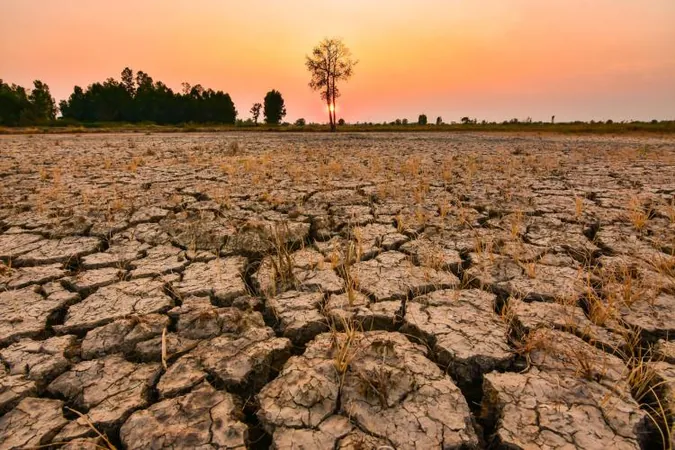
Shocking Prediction: Half of El Niño Events Could Be Extreme by 2050!
2024-09-25
Shocking Prediction: Half of El Niño Events Could Be Extreme by 2050!
As the powerful climate pattern El Niño takes center stage from mid-2023 to mid-2024, the world is experiencing unprecedented changes: global temperatures have shattered records for a full year, driven by one of the strongest El Niño events ever recorded. This climatic phenomenon is linked to extreme weather events, resulting in record-breaking heat, catastrophic floods, and crippling droughts across the globe.
A groundbreaking study published on September 25 in the esteemed journal Nature reveals alarming forecasts for the future. If greenhouse gas emissions continue on their current trajectory, the study predicts that by the year 2050, half of all El Niño events could reach extreme levels.
Pedro DiNezio, a climate scientist from CU Boulder and the study’s co-lead author, expressed grave concerns, stating, “It’s pretty scary that 2050 is not very far away. If these extreme events become more frequent, society may not have enough time to recover, rebuild, and adapt before the next El Niño strikes. The consequences would be devastating.”
What is El Niño and Why Does It Matter?
El Niño arises when Pacific Ocean water temperatures near the equator rise at least 0.9°F above average for an extended time. This seemingly minor shift can have profound effects, altering wind patterns and ocean currents and triggering unusual global weather phenomena, including severe heatwaves, floods, and droughts.
When water temperatures soar by 3.6°F above average, El Niño is classified as extreme. According to the U.S. National Oceanic and Atmospheric Administration, there have only been three to four extreme El Niño events since the agency began tracking them in the 1950s.
The impacts of these extreme events can be catastrophic. Take, for example, the winter of 1997-98, when El Niño caused record rainfall in California, leading to devastating landslides that resulted in numerous fatalities. Additionally, that event played a role in the loss of approximately 15% of the world’s coral reefs due to prolonged warming.
The Science Behind the Prediction
In the pursuit of understanding these climate patterns, DiNezio and his team utilized a sophisticated computer model to simulate El Niño events over the past 21,000 years. They found that during the Ice Age—when the Earth's climate was significantly cooler—extreme El Niño events were exceedingly rare. However, as the planet warmed, the frequency and intensity of these events began to increase.
By cross-referencing their model with historical ocean temperature data from fossilized shells of foraminifera, scientists were able to reconstruct climatic patterns and validate their findings. This research not only enhances our understanding of past El Niño events but also increases confidence in predicting future occurrences.
The model ominously forecasts that if greenhouse gas emissions remain unchecked, one in two El Niño occurrences could transition to extreme by 2050.
The Mechanism Behind the Madness
Despite the complexity of El Niño, the researchers identified a single driving force behind the frequency and intensity of these events. As ocean temperatures rise, the typical easterly winds over the Pacific weaken. This allows warmer water to flow eastward, further weakening winds in a self-reinforcing cycle known as the Bjerknes feedback.
With enhanced greenhouse gas emissions driving up atmospheric temperatures, the Bjerknes feedback becomes stronger, which means more frequent extreme El Niño events are on the horizon.
Urgent Call to Action
With the most recent El Niño in the rearview mirror, DiNezio urges society to act decisively to mitigate the future impacts of extreme events. This includes aggressive steps to curb emissions and strengthen the resilience of vulnerable communities, particularly in developing nations.
“We understand now how these extreme events happen, and we just need the political will to reduce our reliance on fossil fuels,” DiNezio states. “Our findings emphasize the urgent need to limit warming to 1.5°C to sidestep catastrophic climate impacts.”
Prepare for a future of extreme weather—take action now before it's too late!




 Brasil (PT)
Brasil (PT)
 Canada (EN)
Canada (EN)
 Chile (ES)
Chile (ES)
 España (ES)
España (ES)
 France (FR)
France (FR)
 Hong Kong (EN)
Hong Kong (EN)
 Italia (IT)
Italia (IT)
 日本 (JA)
日本 (JA)
 Magyarország (HU)
Magyarország (HU)
 Norge (NO)
Norge (NO)
 Polska (PL)
Polska (PL)
 Schweiz (DE)
Schweiz (DE)
 Singapore (EN)
Singapore (EN)
 Sverige (SV)
Sverige (SV)
 Suomi (FI)
Suomi (FI)
 Türkiye (TR)
Türkiye (TR)